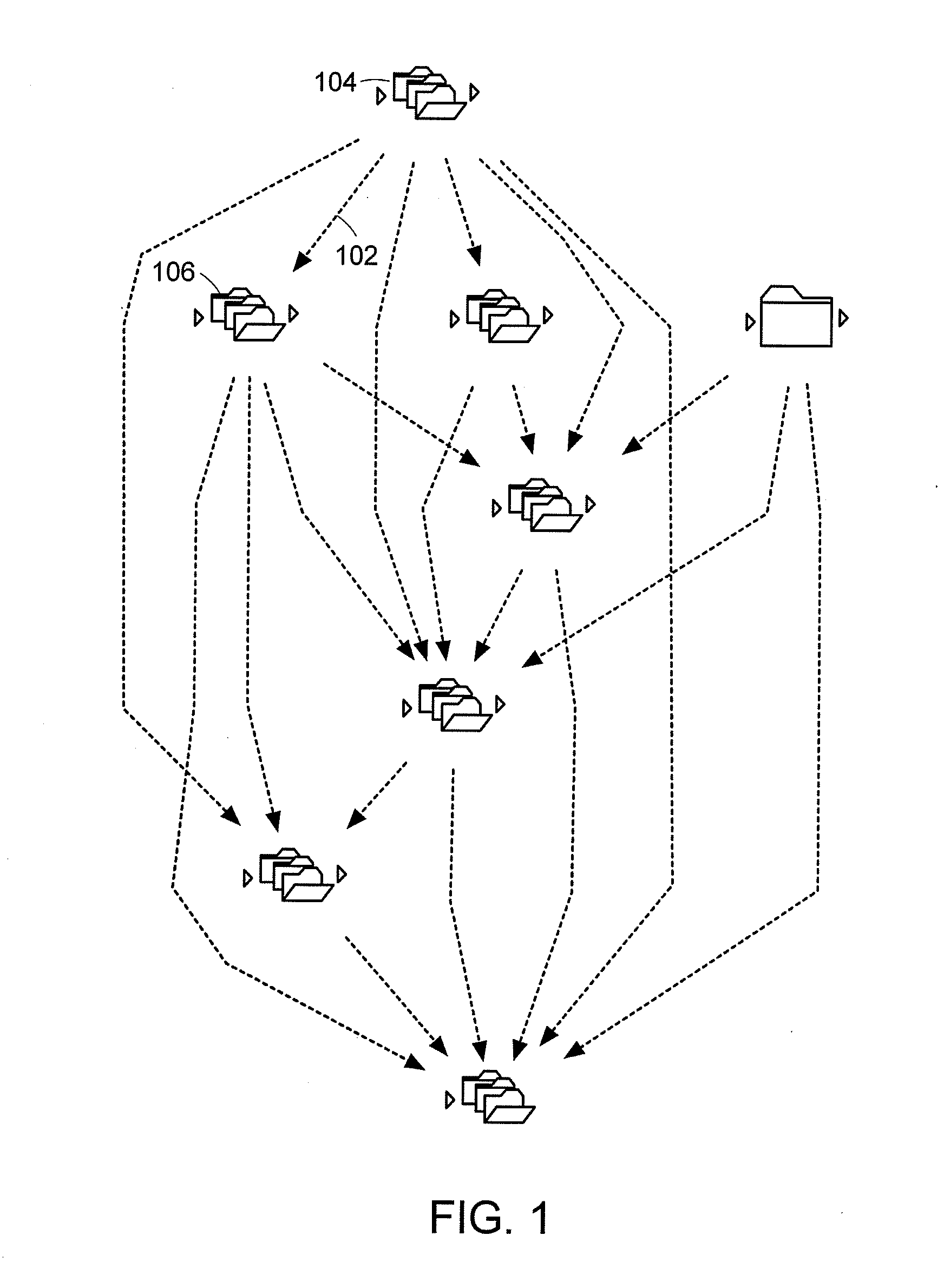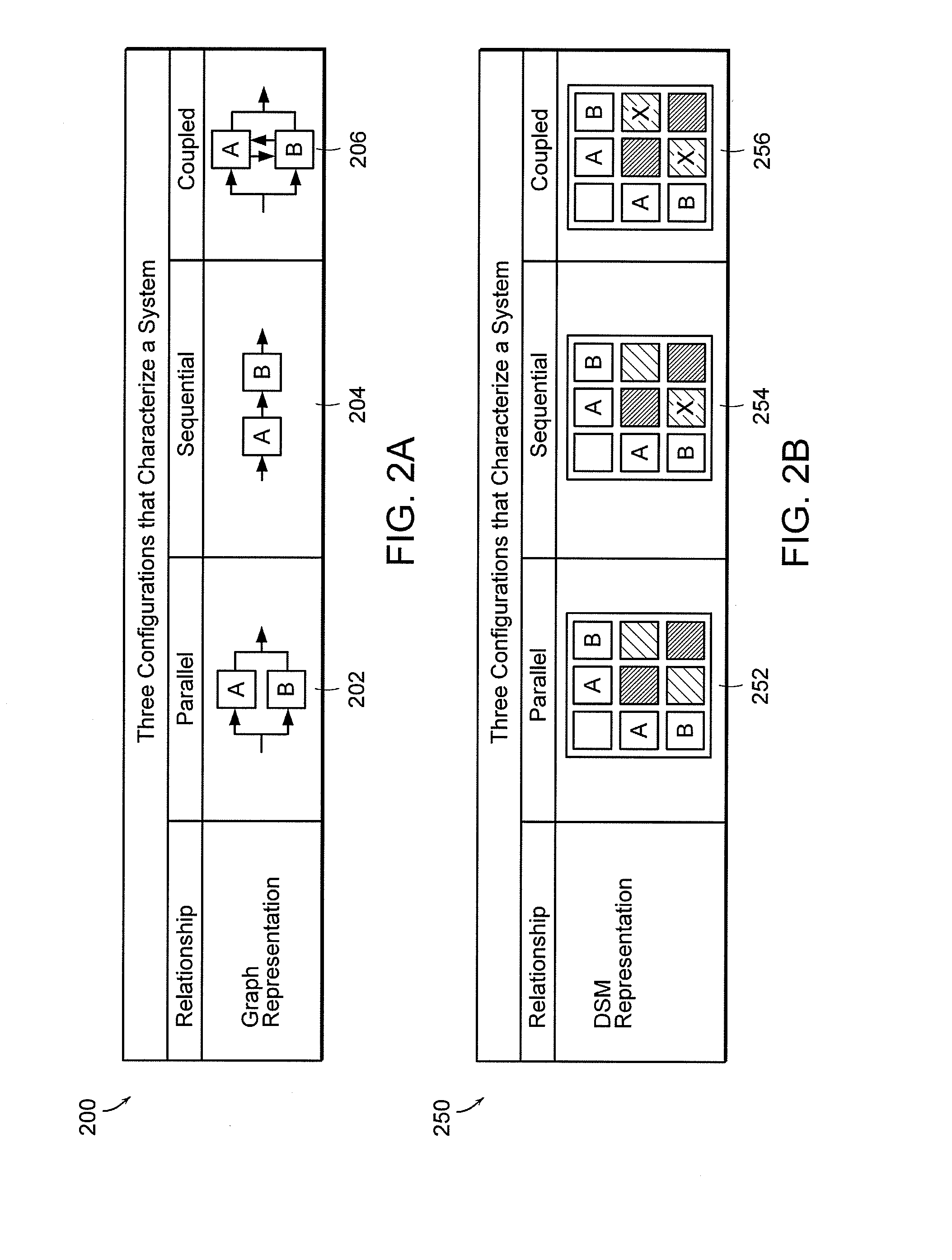Apparatus and Methods for Displaying and Determining Dependency Relationships Among Subsystems in a Computer Software System
a computer software and subsystem technology, applied in the field of dependency structures, can solve problems such as complex, difficult management of large-scale software development projects, and difficulty in determining interdependencies, and reduce the modularity of the system
- Summary
- Abstract
- Description
- Claims
- Application Information
AI Technical Summary
Benefits of technology
Problems solved by technology
Method used
Image
Examples
Embodiment Construction
[0111]Definitions. As used in this description and the accompanying claims, the following terms shall have the meanings indicated, unless the context otherwise requires:
[0112]A “dependency structure matrix” (DSM) is a symmetric matrix, frequently a binary matrix, with matching horizontal and vertical axes, so that a corresponding row and column relate to the same subsystem and each cell has a value indicative of the strength of the dependency. A DSM has also been referred to in the literature as a “dependency structure matrix”, “dependency structure model”, and “adjacency matrix.”
[0113]A “subsystem” means any portion of a software system, regardless of the level of granularity, so that a subsystem includes class, package, module, component, layer, file, directory, partition, etc, depending on the level of granularity selected and includes data on which computer instructions may operate. One example of a subsystem is a database.
[0114]A “domain” is a technology-based category of a sub...
PUM
 Login to View More
Login to View More Abstract
Description
Claims
Application Information
 Login to View More
Login to View More - R&D
- Intellectual Property
- Life Sciences
- Materials
- Tech Scout
- Unparalleled Data Quality
- Higher Quality Content
- 60% Fewer Hallucinations
Browse by: Latest US Patents, China's latest patents, Technical Efficacy Thesaurus, Application Domain, Technology Topic, Popular Technical Reports.
© 2025 PatSnap. All rights reserved.Legal|Privacy policy|Modern Slavery Act Transparency Statement|Sitemap|About US| Contact US: help@patsnap.com



